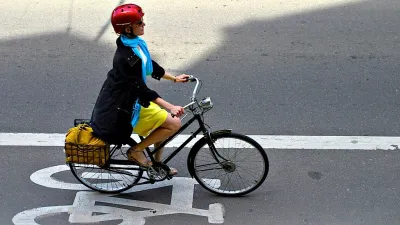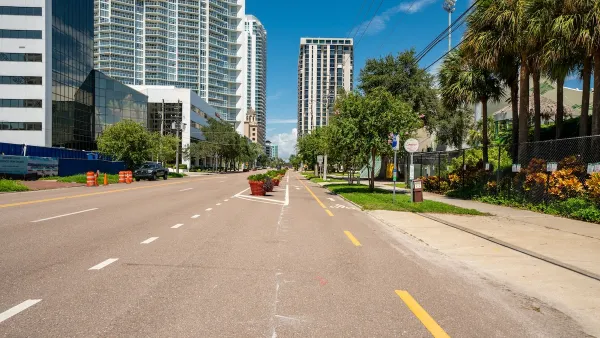In his new book, James Longhurst asks: "Why are most American cities still so ill-prepared to handle cyclists?"

The history professor answers questions during a recent stop on his book tour to promote Bike Battles: A History of Sharing the American Road.
The road is a shared resource. "It’s easy to forget it’s shared between many different users, and that’s the only way the public road had really existed for millennia before one user type became more successful than others."
He uses a model of path dependency to analyze policy. "Cities are the debris fields of history. They’re the leftover physical monuments of decisions that were made and not made in the past." This model offers us the freedom to politically evolve. "[Decisions] may be poured in concrete, but they’re not set in stone."
He touches upon the history of Golden Ages for bicycles in the United States, but notes that the current bike boom is more than a fad because the economics of transportation has fundamentally changed. "Even as gas prices come down, we can’t afford the infrastructure for cars. It doesn’t get cheaper the more of it we build."
Longhurst believes that a change in the perception of who uses bicycles is critically important to changing the politics around bicycling. "If you can make the user group mainstream, so people in cars look at them and think ‘that’s us,’ then voters and taxpayers will see the users simply as the public."
FULL STORY: Bike Battles: Why We Debate Who Owns the Road

National Parks Layoffs Will Cause Communities to Lose Billions
Thousands of essential park workers were laid off this week, just before the busy spring break season.

Retro-silient?: America’s First “Eco-burb,” The Woodlands Turns 50
A master-planned community north of Houston offers lessons on green infrastructure and resilient design, but falls short of its founder’s lofty affordability and walkability goals.

Delivering for America Plan Will Downgrade Mail Service in at Least 49.5 Percent of Zip Codes
Republican and Democrat lawmakers criticize the plan for its disproportionate negative impact on rural communities.

Test News Post 1
This is a summary

Test News Headline 46
Test for the image on the front page.

Balancing Bombs and Butterflies: How the National Guard Protects a Rare Species
The National Guard at Fort Indiantown Gap uses GIS technology and land management strategies to balance military training with conservation efforts, ensuring the survival of the rare eastern regal fritillary butterfly.
Urban Design for Planners 1: Software Tools
This six-course series explores essential urban design concepts using open source software and equips planners with the tools they need to participate fully in the urban design process.
Planning for Universal Design
Learn the tools for implementing Universal Design in planning regulations.
EMC Planning Group, Inc.
Planetizen
Planetizen
Mpact (formerly Rail~Volution)
Great Falls Development Authority, Inc.
HUDs Office of Policy Development and Research
NYU Wagner Graduate School of Public Service





























